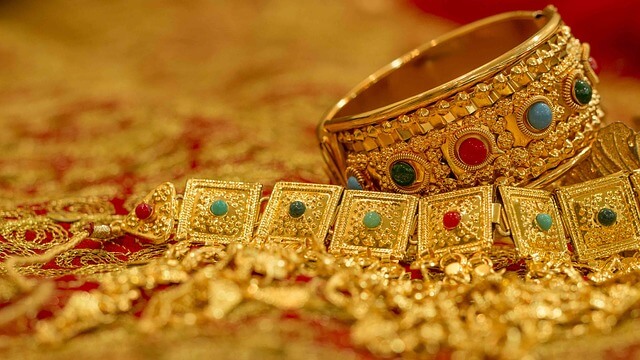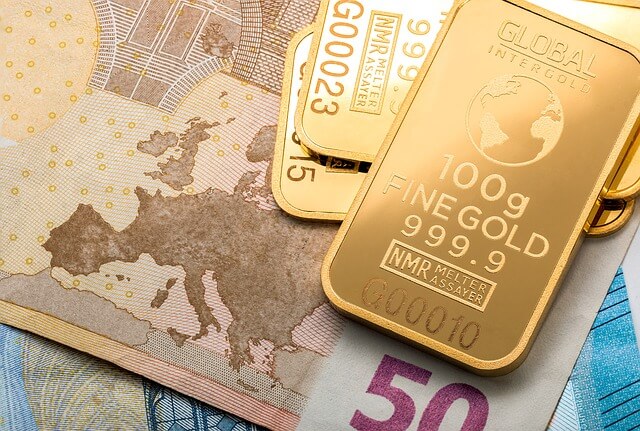Anyone looking to purchase gold these days is spoilt for choice. You can purchase physical gold in the form of jewelry or gold bars, or you can go the digital route – eGold, Gold ETF, or Sovereign Gold Bonds.
Let’s make these choices simpler by discussing each of these options.
Physical Gold
If you are looking to purchase jewelry for some occasion in the near future then there is no confusion – this is the way to go.
If you are looking to purchase jewelry or any other form of gold for some occasion in the distant future, then this may not be the right choice, as you will have to ensure the safe-keeping of this physical gold, which will be an additional monetary cost (in the form of a bank safe for example). We’ll discuss later in this article the other options that you have for such a scenario.

If you are planning to purchase jewelry as an investment, please don’t! Here is why:
- When you purchase jewelry you pay a making charge and a wastage charge to the jeweler, which can be a significant amount depending on the design of the jewelry, thus inflating the cost. But when you sell, the jeweler only pays for gold. So, you lose some money there.
- Generally, jewelers purchase jewelry at some discount from the current market rate, so you end up losing some more!
- And then you have to pay capital gain tax on the amount you get.
Considering all this, it’s not really worth purchasing jewelry as an investment. There are better options available, as we will see further in this article.
Digital Gold or e-Gold
A lot of known fintech brands – Google Pay, Paytm, PhonePe, Kuvera, etc – are offering the option to purchase digital gold. One can purchase 24-carat gold for as low as ₹1/-. This has made it much simpler for anyone to purchase gold.
However, a few things to remember before purchasing e-gold:
- You lose 6% in e-gold as soon as you buy them – 3% in GST and 2-3% in the buy-sell spread (the difference between the buy price and sell price on any day – buy price is 2-3% higher than the selling price).
- As of now, the companies provide free storage of the gold that you purchase through them. But that comes with a rider generally – you either have to take the delivery of the gold after a certain period, sell it back to them, or pay for storage. Getting delivery of the gold may attract delivery charges as well.
So, this is again not suited for investment. If you are planning to purchase jewelry for some occasion at a later date, you can probably go with this option. That will save you from the hassle of storing the physical gold, and you can sell it when you need gold for consumption. Since you purchase 24-carat gold, while jewelry is made of 22-carat gold or less, you may be able to cover all additional charges – delivery cost, storage cost, design charge, etc.
Gold ETF
ETFs, or Exchange Traded Funds, are commodity-based Mutual Funds – they invest in commodities instead of stocks. A Gold ETF invests in gold. When you invest in Gold ETF you get equivalent units instead of actual gold.

If you are looking to invest in gold, this is one of the ways to go about it. Do note that while the expectation is that ETF will exactly mimic the price of the actual gold, that doesn’t happen in reality. The reason for that is two-fold:
- Expense Ratio: Fund Houses charge an expense ratio (generally less than 1%) to take care of administrative expenses of managing the fund. If the expense ratio of a fund is 1% it means that for every ₹100/- invested by you, the fund house deducts ₹1 yearly. Due to this, the price of gold ETF will not exactly mimic the price of actual gold.
- Tracking Error: This is the divergence in the NAV of the fund and the actual value of physical gold. The fund house keeps a certain amount of cash as per the regulatory requirements, and there are some transaction costs also involved. This could lead to some divergence in the cost of ETF and the actual value of gold.
So, before investing in the ETF, you must check the expense ratio and tracking error of all the ETFs and go with the one with the least expense ratio and tracking error.
Sovereign Gold Bond
There is another trusted way of investing in gold, which is through Sovereign Gold Bonds. This is a government scheme that lets you purchase bonds that track the price of 24-carat gold – you can read more about it on RBI’s website.
Sovereign Gold Bonds are issued for a period of 8 years – though you have the option to trade them in the market if you want to redeem your investment before that. At the time of maturity, SGB’s redemption price is decided as the average closing price of 24-carat gold of the previous 3 business days from the date of repayment, published by the India Bullion and Jewelers Association Limited.
If you hold these bonds till maturity, i.e. for the 8-year period, then there is no capital gain tax on the profit you make. This is one of the biggest advantages of SGB over Gold ETF – the returns in Gold ETF are taxable.
When you invest in SGB, you also get a 2.5% interest per annum (paid half-yearly) on the investment amount. That’s another added advantage that Sovereign Gold Bond has over ETFs.
The biggest disadvantage of SGB in my opinion is that they are to be compulsorily liquidated after 8 years of tenure. You cannot continue to hold them if the price of gold is below your purchase price at the time of maturity. You will have to suffer a loss in that case. Gold ETF, on the other hand, can be held for as long as you want.
Another disadvantage is that SGB is not available year-round. RBI and banks notify from time to time when the bond is available for purchase. Generally, it goes on sale for 5 days every month, and on special occasions like Diwali, Akshaya Tritiya, etc.
Conclusion
So, to conclude, this is what I suggest:
If you want to purchase gold for personal use – jewelry, gift on some occasion, etc – in the near future (a few months from now), then purchase physical gold.
If you want to purchase gold for some personal use in the distant future (a few years from now), then go for Sovereign Gold Bond. Even if the gold price at that time is below your cost price, you don’t have to worry about the losses because the price of jewelry would also go down in the same proportion. In fact, since SGB tracks the price of 24-carat gold while jewelry is made of 22-carat gold or less, you will be able to cover making charges also. In addition, you would have also earned some interest in your investment.
You can also consider e-Gold if you don’t want to purchase SGB.
If you want to invest in gold as a hedge against equity, put your money in a Gold ETF that has a low expense ratio and low tracking error.
Do you agree with my approach? Share your views through the comment form below.